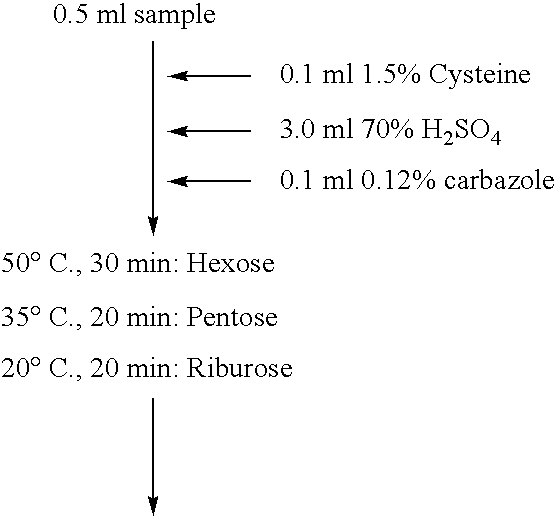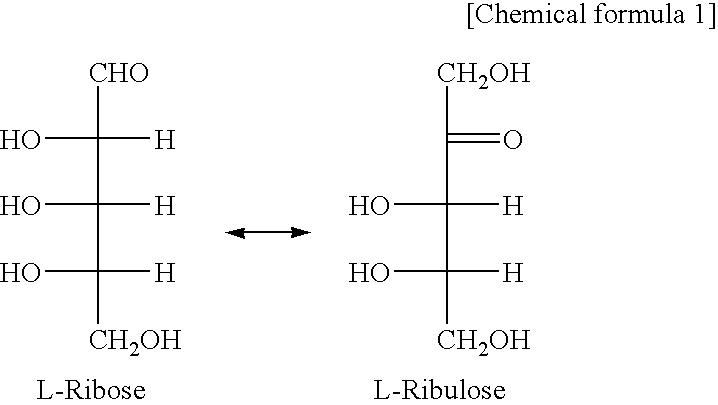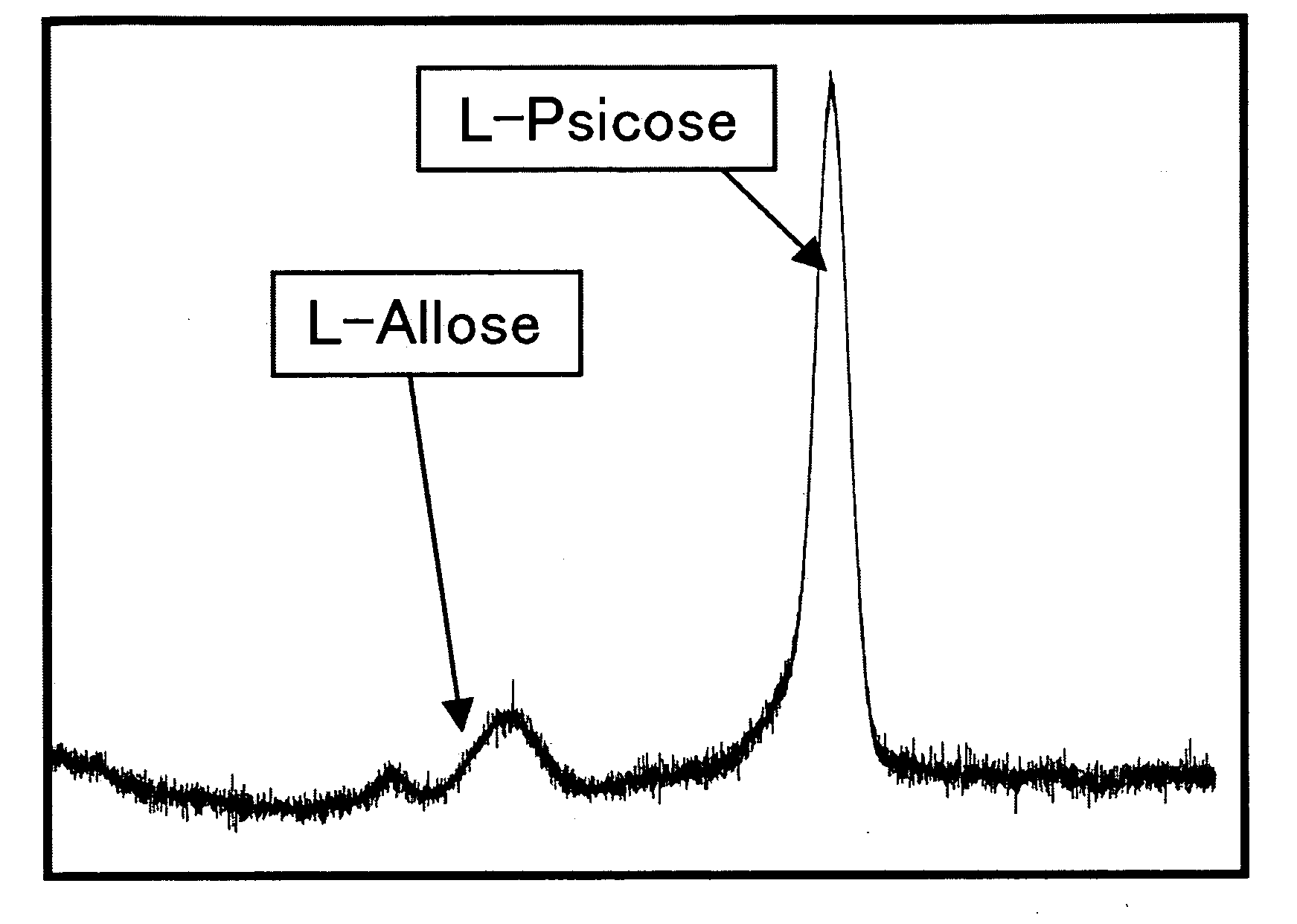Thermostable l-ribose isomerase and method for producing same and use of same
- Summary
- Abstract
- Description
- Claims
- Application Information
AI Technical Summary
Benefits of technology
Problems solved by technology
Method used
Image
Examples
example 1
Properties of Purified Enzyme
[0045]Using 50 mM L-ribose as a substrate, the enzyme reaction continued at 45° C. for 10 minutes, so that the amount of the generated ketose (L-ribulose) was assayed by the cysteine / carbazole method. As to the temperature stability, the enzyme activity was assayed after 10-min treatment at individual temperatures. As to the optimal pH conditions, the enzyme reaction was performed at 45° C. for 10 minutes in 50 mM acetate buffer (pH 2 to 6), 50 mM sodium phosphate buffer (pH 6 to 8), 50 mM Tris-HCl buffer (pH 8 to 9) or 50 mM glycine-sodium hydroxide buffer (pH 9 to 11), using 50 mM L-ribose as substrate, to assay the amount of a ketose (L-ribulose) generated thereafter by the cysteine / carbazole method (Table 2). The enzyme reaction was done at the composition shown in Table 2 at 45° C. for 10 minutes (Table 3), and the reaction was terminated by adding 50 μl of 10% TCA (trichloroacetic acid). As shown in Table 2, the cysteine / carbazole method comprised ...
PUM
| Property | Measurement | Unit |
|---|---|---|
| Temperature | aaaaa | aaaaa |
| Acidity | aaaaa | aaaaa |
| Concentration | aaaaa | aaaaa |
Abstract
Description
Claims
Application Information
 Login to View More
Login to View More - R&D
- Intellectual Property
- Life Sciences
- Materials
- Tech Scout
- Unparalleled Data Quality
- Higher Quality Content
- 60% Fewer Hallucinations
Browse by: Latest US Patents, China's latest patents, Technical Efficacy Thesaurus, Application Domain, Technology Topic, Popular Technical Reports.
© 2025 PatSnap. All rights reserved.Legal|Privacy policy|Modern Slavery Act Transparency Statement|Sitemap|About US| Contact US: help@patsnap.com



